Summarizes recent work that now has determined more precisely the span of Etruscan tomb painting. That very few Etruscan painted tombs are found intact and that the iconography is more difficult to interpret than previously believed.
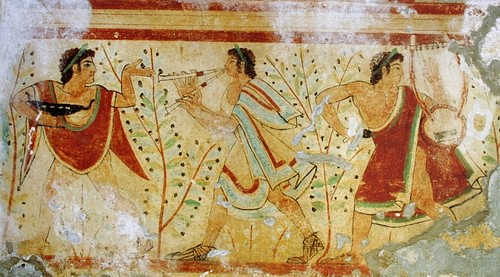
Etruscan Tomb Paintings World History Encyclopedia
This wall painting from the Tomb of the Charuns or Demons shows a typical appearance of Vanth left and Charun right either side of a door in an Etruscan tomb although here the door itself is painted rather than an opening.
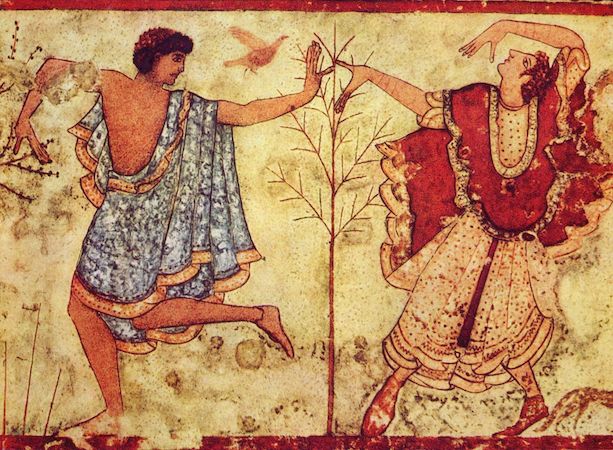
. Every level of Etruscan society had frescoes on their tombs. Within Etruscan art tomb painting is a special topic. Later techniques included those such as chiaroscuro which gives greater depth and value.
About 180 Etruscan paintings are known. In the southern part of the Etruscan empire most tombs housed sarcophagi while. But their activities were necessarily far more limited in scope than those taken in by the all-powerful heads of a centralized hieratic.
The Etruscans were isolated from other cultures. The tombs were typically carved from living rock with walls windows and doorframes all decorated with household objects the dead might need in the afterlife. What two materials were Etruscan sarcophagi usually made from.
Tombs were often highly decorated with details of funeral rites detailing funeral feasts and processions the gods of the underworld and the games used to commemorate the dead. Etruscan tomb paintings survive in a very narrow geography and context. Wall paintings were especially vibrant and frequently capture scenes of Etruscans enjoying themselves at parties and banquets.
Tomb paintings Etruscan were funeral rites or optimistic scenes of aristocratic pleasures of----- Tomb of the Augurs in Tarquinia The figures stand on a horizontal ground line flanking the closed door leading to the underworld. Etruscan funerary artincluding painted tombsoften depicts scenes of revelry perhaps as a reminder of the funeral banquet that would send the deceased off to the afterlife or perhaps to reflect the notion of perpetual conviviality in said afterlife. Unknown Wall painting in the Tomb of the Charuns or Demons further details not known.
The others are scattered across different cities and time periods. Much of the art left to us is in the form of frescoes or clay funerary sculpture all found in these tombs. Tomb interiors also contain much information about Etruscan life.
Footnote 83 Indeed scholars have long recognized that Etruscan urns were known in fifteenth-century Italy and very likely earlier as well and all of them had to come from a tomb at one point or another. This is due in part to the fact that ready sources of marble were. The blade in your razor should be replaced.
The art treasures of the Etruscans Fine arts in terracotta. A considerable group of Etruscan tomb-paintings dating from the middle of the sixth century show in their composition close connexion with Ionic vase-painting especially with the so-called Caeretan hydriae while their main pictures tell us something about the Etruscans themselves and their conceptions of Life and Death and Eternity. Etruscan painting technique was characterized by painting directly on fresh plaster so that the paint adhered to the plaster and thusly became part of the wall itself.
In the much shorter-lived Etruscan civilization the wealthy citizens of the various semi-independent cities were buried in tombs where their way of living--far closer to the ordinary behavior of common people--was depicted in wall paintings. Leonardo therefore had access to Etruscan tombs from which to draw information about Etruscan funerary architecture. They were made of mud brick and terracotta and had three enclosed worship halls called cella.
Fine arts in terracotta. Many surviving paintings are those on wall frescoes at burial sites. Frescoes adorned the walls of the tombs.
Tomb paintings suggest that gladiatorial contests could have had their origin in these funeral games. Etruscan temples were supported by a wooden unfluted column with a large base called the Tuscan column. Terracotta artwork was the standard for decorating the superstructure of Etruscan temples and the coroplastic terracotta workshops producing these sculptures often displayed a high level of technical achievement.
In the southern part of the Etruscan empire most tombs housed sarcophagi while urns were usually used in the northern part. The art of the Etruscans who flourished in central Italy between the 8th and 3rd century BCE is renowned for its vitality and often vivid colouring. The Etruscans usually placed their dead sometimes cremated sometimes not in subterranean tombs that contained sculptures and detailed painted murals.
Etruscan temples were similar to Greek temples but only had columns in the front. Very few tomb paintings are found in the northern half of Etruria. Of those 140 are from Tarquinia.
Etruscan painting was highly developed and used pigments created from stone and minerals. Only in the animal friezes. This section also begins to tackle two major problems.
March 23 2022.
Etruscan Tomb Paintings Ancient Man And His First Civilizations

Tomb Of The Triclinium Article Khan Academy
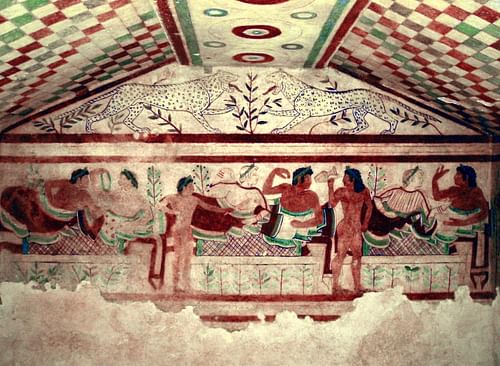
Etruscan Tomb Paintings World History Encyclopedia
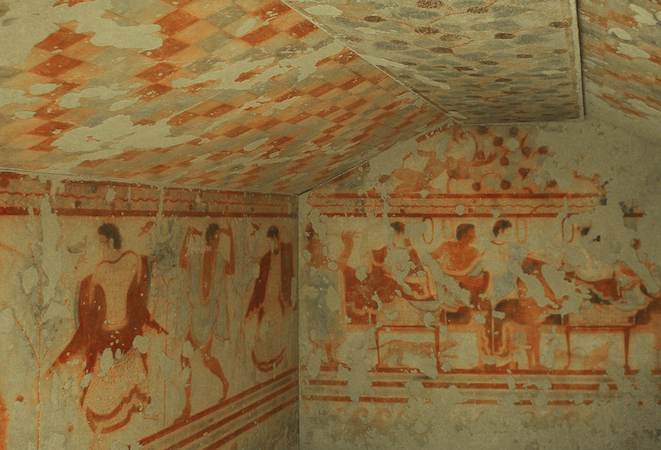
Tomb Of The Triclinium Article Khan Academy
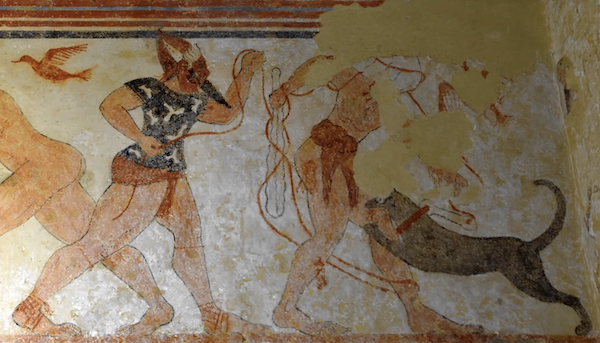
The Etruscans An Introduction Article Khan Academy
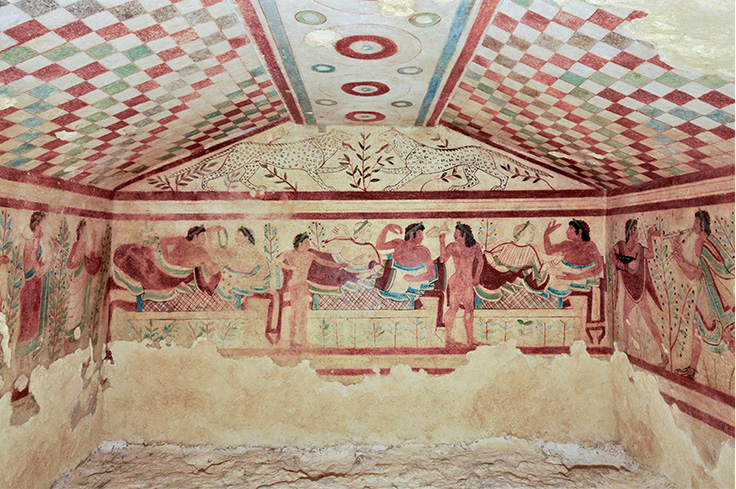
History Of Art In 20 Media Part 4 Wall Painting Christie S
Etruscan Tomb Paintings Ancient Man And His First Civilizations
Etruscan Tomb Paintings Ancient Man And His First Civilizations
0 comments
Post a Comment